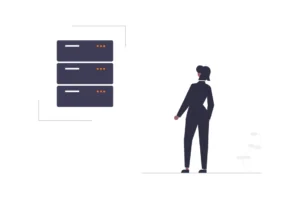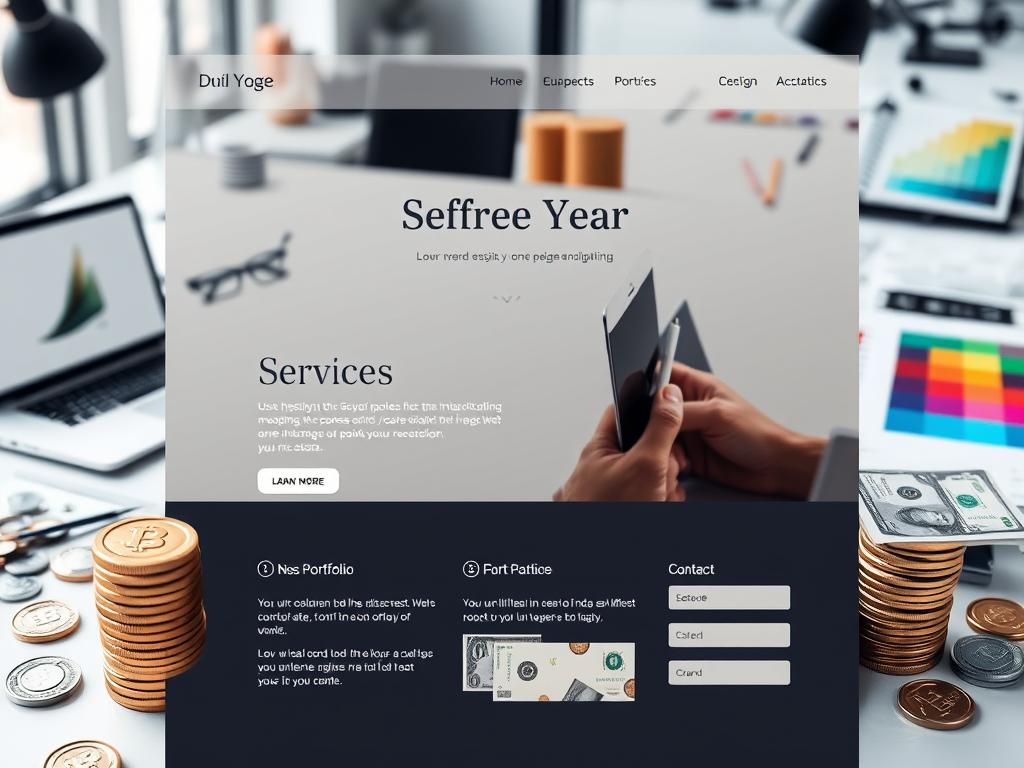In the ever-evolving environment of web design, staying informed through reputable blogs is essential for both professionals and newcomers alike. Notable platforms such as A List Apart and Boagworld have consistently offered perspectives that prioritize user experience, while Vandelay Design caters to those seeking foundational knowledge. Additionally, resources like UX Booth and UX Planet address the nuances of accessibility and thorough design strategies. As we investigate these top picks, one must consider how each blog uniquely contributes to the broader discourse of design innovation and user engagement. What might be the hidden gems within this vibrant community?
Award-Winning Design Showcases
In the dynamic realm of web design, award-winning showcases serve as beacons of creativity and innovation, highlighting the best practices in the industry. Platforms like Awwwards highlight exceptional talent in design and development, featuring a curated selection of projects that embody excellence in user experience and aesthetic appeal.
Each "Site of the Day" reflects cutting-edge trends, inspiring designers to push creative boundaries. Similarly, Siteinspire trends provide a rich repository of over 8,500 categorized web designs that stimulate fresh ideas and innovative approaches.
Both platforms encourage submissions from designers, nurturing a vibrant community that celebrates originality. By exploring these showcases, professionals and enthusiasts alike can gain insight into the evolving environment of web design and enhance their own projects.
Thought Leadership Platforms
The investigation of award-winning design showcases naturally leads to the realm of thought leadership platforms, where industry experts articulate viewpoints and trends that shape the future of web design.
Platforms like A List Apart and Boagworld examine user-centered design, offering revelations that push creative boundaries. A List Apart provides a space for articles that investigate innovative strategies, merging design with content and business elements.
Meanwhile, Boagworld highlights the importance of prioritizing user experiences, equipping marketers and designers alike with essential knowledge.
These thought leaders cultivate a culture of freedom, encouraging professionals to challenge conventional practices and embrace fresh ideas.
Beginner-Friendly Learning Resources
Navigating the world of web design can be intimidating for beginners, but a wealth of resources exists to simplify this journey. Platforms like Vandelay Design and UX Booth serve as essential starting points, offering tutorials that break down design fundamentals and guide you through essential creative processes.
Vandelay Design provides a collection of free design bundles and templates, enabling newcomers to practice without financial constraints. Meanwhile, UX Booth features insightful articles on accessibility and visual design, catering to both novices and seasoned designers.
Comprehensive UX Insights
Understanding user experience (UX) is crucial for creating intuitive and engaging digital products that connect with audiences. Thorough UX observations draw upon meticulous user research, revealing user needs and preferences that drive design decisions.
By prioritizing design ethics, professionals guarantee that their products cultivate trust and respect for user privacy, enhancing overall satisfaction. Resources like UX Planet and Prototypr provide useful knowledge, exploring the intersection of user needs and ethical considerations in design.
Engaging with these observations enables designers to craft experiences that connect profoundly with users, promoting not only usability but also emotional connection.
Ultimately, embracing thorough UX principles leads to innovative solutions that break free from conventional constraints, elevating digital interactions to new heights.
Typography Resources
Exploring the world of typography is essential for designers aiming to raise their projects and improve brand identity. Typography trends evolve rapidly, influencing how brands communicate visually.
Resources like Typewolf provide essential perspectives into font pairing, showcasing harmonious combinations that boost readability and aesthetic appeal. By grasping the nuances of typography, designers can create a distinct voice for their brand, ensuring consistency across all platforms.
Additionally, exploring curated lists of popular fonts enables designers to stay ahead of trends while maintaining a unique identity. Embracing these typography resources not only enriches design projects but also enables designers to express their creativity freely, ultimately leading to enthralling and memorable user experiences.
Essential Web Design Tools
The efficacy of web design hinges greatly on the tools utilized throughout the creative process. Essential web design tools enable designers to craft visually stunning and functional websites that embrace responsive design principles.
Software like Adobe XD and Figma assist in the creation of wireframes and prototypes, allowing for seamless collaboration and iteration. Additionally, tools such as Sketch improve the design experience by integrating color theory, enabling designers to select harmonious palettes that evoke emotion and brand identity.
In addition, platforms like WordPress provide customizable templates that support responsive layouts, ensuring accessibility across devices.
User Experience Focus
Focusing on user experience (UX) is essential in the domain of web design, as it directly influences how users interact with digital products. Comprehending design psychology helps designers create interfaces that connect with users, while incorporating user feedback guarantees that their needs are met. The following table highlights key elements to improve UX:
| Element | Description | Importance |
|---|---|---|
| User Research | Gather knowledge on user behavior | Tailors design to audience needs |
| Usability Testing | Assess interface functionality | Identifies pain points |
| Visual Hierarchy | Organize content for easy navigation | Improves user flow |
| Accessibility | Guarantee inclusivity for all users | Expands audience reach |
| Iterative Design | Continuous refinement based on feedback | Improves overall experience |
Business and Marketing Strategies
Effective business and marketing strategies are essential for the success of any web design initiative, as they bridge the gap between creative vision and client expectations. Incorporating robust branding techniques allows designers to create memorable identities that connect with audiences, nurturing loyalty and recognition.
Additionally, focusing on conversion optimization improves user experiences, driving engagement and revenue growth. By analyzing user data and implementing A/B testing, designers can refine their approaches, ensuring every element serves a purpose.
Leveraging social media and content marketing effectively amplifies visibility, attracting potential clients keen for innovative solutions. Emphasizing these strategies not only raises design projects but also enables designers to carve out their unique space in a competitive marketplace.
Frequently Asked Questions
How Do I Submit My Work to These Web Design Platforms?
To showcase your creative essence, prepare a polished portfolio presentation. Each platform has specific submission guidelines, so guarantee your work aligns with their criteria. Engage with their community for greater visibility and feedback.
What Are the Key Trends in Web Design for 2024?
Key trends in web design for 2024 highlight minimalist aesthetics and interactive elements, promoting user engagement while ensuring clarity. This approach improves visual appeal, allowing designers to create intuitive experiences that connect with diverse audiences.
Are There Any Web Design Competitions I Can Enter?
Entering web design competitions offers numerous benefits, including exposure, networking, and potential accolades. Typically, entry requirements involve submitting original work, adhering to guidelines, and showcasing creativity, which can markedly improve your professional portfolio.
How Can I Network With Other Web Designers Online?
Networking with fellow web designers online can be intimidating, but embracing social media platforms and engaging in online forums nurtures connections. Participate actively, share knowledge, and showcase your work to build meaningful relationships within the design community.
What Certifications Are Valuable for a Web Designer's Career?
Essential certifications for web designers include Adobe Certified Expert, Google UX Design, and W3C certifications. These credentials improve skills, validate proficiency, and notably contribute to career advancement, enabling professionals to excel in the competitive digital environment.








